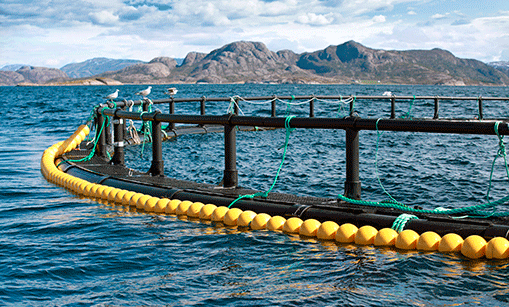This project emphasizes the advancement of aquaculture technology systems that are economically sustainable and improve animal welfare. This includes, the use of flexible shielding skirts for prevention of ectoparasites infestation (Sealice,...) of farmed fish salmon, procedures for underwater monitoring and safe and efficient operation.

This project aims to support the European aquaculture industry to commercially utilize semi-shielded flexible cages for finfish farming. The project will do this by delivering the necessary knowledge base and by developing necessary tools and methods for the design, the operations and assuring structural safety of these new types of cage.
Project Results:
- Develop a new model for marine flexible structures to improve safety, reliability and productivity of equipment.
- Study and predict the long-midterm effects of growing marine organisms on these structures.
- Develop adapted sensors deployment strategy for cost efficient monitoring of complexes marine infrastructures.

Monitoring and decision support: A digital platform for monitoring and visualization of aquaculture net cages and fish distribution developed in this project.
Expected impact of project for policy/industry/other stakeholder and future perspectives:
Results from the project are expected to pave the way for an optimum and reliable use of shielding technologies to prevent ectoparasites disease, which is responsible for huge annual losses due to increased mortality, lost growth, and reduced product quality. Drugs and chemical bath are the main practices used to control the lice infestations. Treatment to control lice infestations in Norwegian salmon farms increased and represented an estimated average cost of 2-5 NOK per kg produced salmon, (9–23% of the total production cost per kg salmon). This cost escalated to €430 million in Norway alone during 2015, not including loss of productivity. Furthermore, end-consumers are expressing growing apprehension about the use of drugs and chemicals during farming and food production.
The use of shielding ties in well with these objectives as it represents a clean and economical way to reduce infestation without adverse effects on fish welfare. For the fish farmers, a standard procedure for an optimal installation and maintenance of these shielding technologies will reduce drastically their expenses usually allocated to control the disease. For the providers a large impact is foreseen on growth and employment. The use of skirts is increasing but there is a lack of standard (national or international) about the deployment and maintenance of these over time. It is expected that technological standards will be developed from the results of this project.

